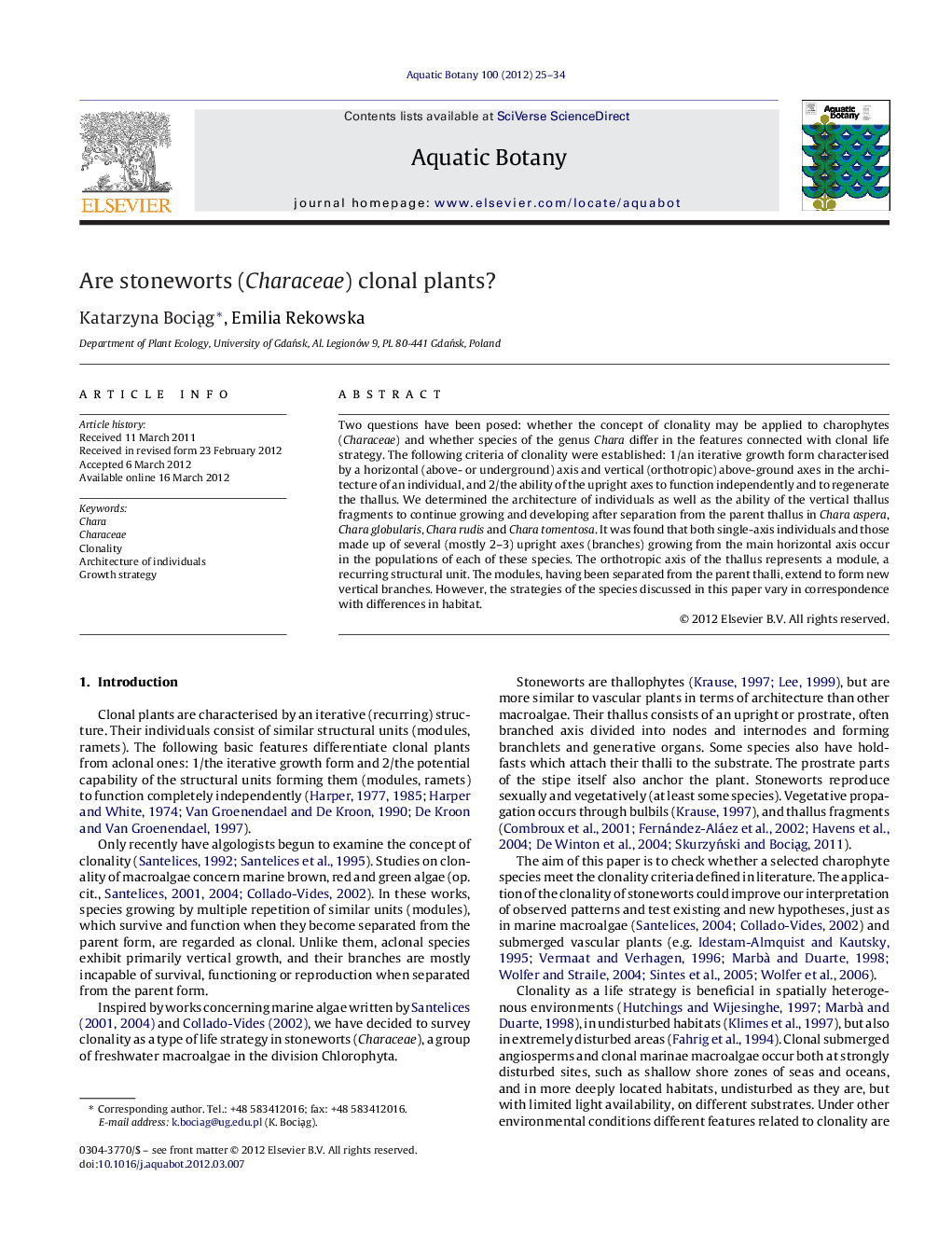| کد مقاله | کد نشریه | سال انتشار | مقاله انگلیسی | نسخه تمام متن |
|---|---|---|---|---|
| 4528030 | 1625842 | 2012 | 10 صفحه PDF | دانلود رایگان |

Two questions have been posed: whether the concept of clonality may be applied to charophytes (Characeae) and whether species of the genus Chara differ in the features connected with clonal life strategy. The following criteria of clonality were established: 1/an iterative growth form characterised by a horizontal (above- or underground) axis and vertical (orthotropic) above-ground axes in the architecture of an individual, and 2/the ability of the upright axes to function independently and to regenerate the thallus. We determined the architecture of individuals as well as the ability of the vertical thallus fragments to continue growing and developing after separation from the parent thallus in Chara aspera, Chara globularis, Chara rudis and Chara tomentosa. It was found that both single-axis individuals and those made up of several (mostly 2–3) upright axes (branches) growing from the main horizontal axis occur in the populations of each of these species. The orthotropic axis of the thallus represents a module, a recurring structural unit. The modules, having been separated from the parent thalli, extend to form new vertical branches. However, the strategies of the species discussed in this paper vary in correspondence with differences in habitat.
► We check whether four charophyte species meet the clonality criteria.
► Charophytes individuals are modular in structure.
► They consist of one or more vertical axes, growing from the main horizontal axis.
► Modules after separation from the parent form can survive and form new branches.
► These species can be regarded as clonal, but they growth strategies are slightly different.
Journal: Aquatic Botany - Volume 100, July 2012, Pages 25–34